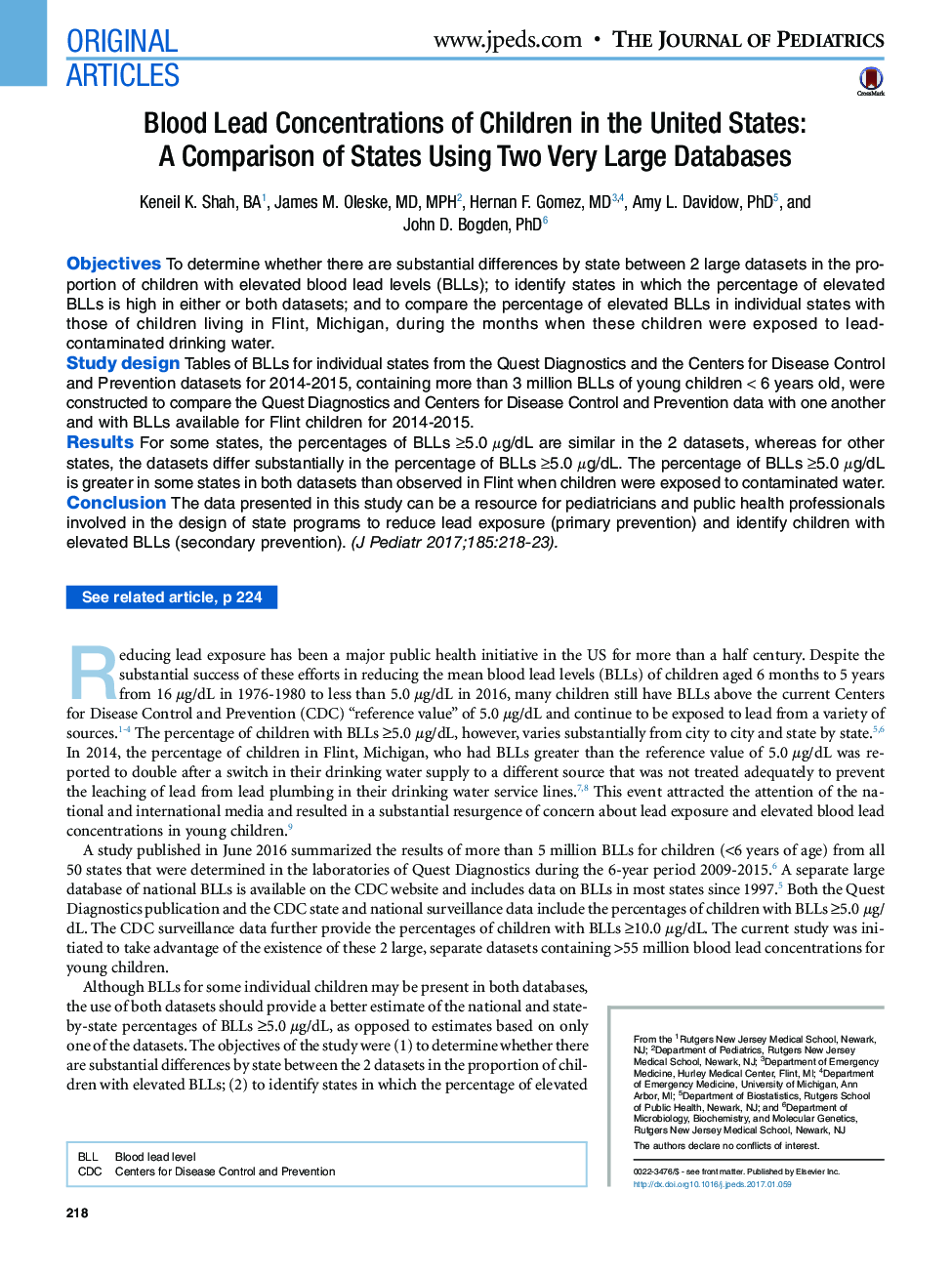| Article ID | Journal | Published Year | Pages | File Type |
|---|---|---|---|---|
| 5719142 | The Journal of Pediatrics | 2017 | 6 Pages |
ObjectivesTo determine whether there are substantial differences by state between 2 large datasets in the proportion of children with elevated blood lead levels (BLLs); to identify states in which the percentage of elevated BLLs is high in either or both datasets; and to compare the percentage of elevated BLLs in individual states with those of children living in Flint, Michigan, during the months when these children were exposed to lead-contaminated drinking water.Study designTables of BLLs for individual states from the Quest Diagnostics and the Centers for Disease Control and Prevention datasets for 2014-2015, containing more than 3 million BLLs of young childrenâ<â6 years old, were constructed to compare the Quest Diagnostics and Centers for Disease Control and Prevention data with one another and with BLLs available for Flint children for 2014-2015.ResultsFor some states, the percentages of BLLs â¥5.0âµg/dL are similar in the 2 datasets, whereas for other states, the datasets differ substantially in the percentage of BLLs â¥5.0âµg/dL. The percentage of BLLs â¥5.0âµg/dL is greater in some states in both datasets than observed in Flint when children were exposed to contaminated water.ConclusionThe data presented in this study can be a resource for pediatricians and public health professionals involved in the design of state programs to reduce lead exposure (primary prevention) and identify children with elevated BLLs (secondary prevention).
